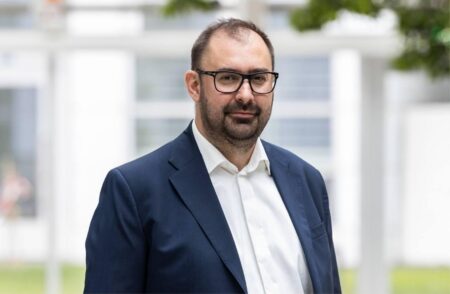A lot of hopes are being pinned on the U.K.’s so-called Golden Triangle, an expanded technology cluster encompassing London and the universities of Oxford and Cambridge. If all goes according to plan, this will be the life sciences and deeptech powerhouse of Britain’s innovation economy – a natural home for the next generation of science-led startups. As such, its success – and the contribution of the universities that form the three points of the region – are crucial to future economic prosperity.
The challenge, however, is to maximise the potential of the startups – many of them university spin-outs – within the region. To do that, the founders who are taking their technologies to the marketplace will have to make the transition from academics to effective CEOs and salespeople. It’s not always an easy journey.
So, what can be done to help? I’ve been talking to Anthony Finbow, currently Entrepreneur in Residence for Founders at the University of Cambridge and its START accelerator program. As an entrepreneur with more than 25 years of experience in starting, running and advising companies in the software and life sciences sector, his role is to support the university’s emerging entrepreneurs, equipping them build viable companies.
Academics On A Learning Curve
As he acknowledges, there is often a learning curve. While it would be wrong to generalize about the Seed and pre-Seed companies in the cohort – some are already selling while others are still at the stage of identifying a market for a prototype technology – the working background of many academics means there are gaps to fill.
Finbow cites sales as a case in point. “Often they have no experience in selling,” he says. “It is not just about turning up. It is about researching the customers and learning from the first interaction about the client’s needs and how they can be served. From there, you build a knowledge bank. A lot of people are not experienced in that.”
It’s a view echoed by Daniel Fredrich, CEO of Pinepeak, one the companies participating in the accelerator programme. The company uses AI to predict wildfire risks anywhere in the world and is developing a product aimed at the insurance industry.
“We’re scientists by background, with little experience of enterprise sales when we started Pinepeal in 2023, ” he says.”Since then, we’ve been on a steep learning curve.”
The task of finding paying customers is complicated by the fact that – almost by definition – science-led startups are offering something new to the customers they target. A point made by Rebekka Mikkola, co-founder and CEO of Trismik, a spinout that is developing tools for the evaluation of large language models. As she explains, the purpose of the technology is to help users decide on which LLMs are most suitable for the tasks in hand.
“We’re operating in a space where many agree LLM evaluations are broken, but there’s little consensus yet on how to do it better,” she says. “Our biggest challenge is building a presence in this emerging category. We’re not just introducing a new tool – we’re proposing a new standard. That means earning trust early, proving our method works across real-world use cases, and becoming the default choice for anyone who needs to evaluate LLMs reliably.”
There are cultural challenges too. Finbow says life as an academic researcher is very different from that of an entrepreneur. In his own career, Finbow has“vectored” from telecoms to life sciences. In the latter field, he found scientists who were focused on the scientific disciplines of conducting experiments to prove concepts. Culturally, that’s a long way from the cutthroat world of building differentiated products in competitive markets.
Building A Vision
So, how does Finbow see the transition from researcher to entrepreneur beginning? Finbow defines his role, at least in part, in terms of helping founders to become more expansive in their thinking. Or to put it another way, he wants them to nurture a long-term vision.
“Most early-stage companies are focused on what they can bring into the world and what will be marketable and saleable in the first instance,” he says. People tend to de-emphasise the concept of the vivid vision.”
By that, he means an assessment of the startup’s prospects from the standpoint of a founder who is still running the company five years into the future.
“So imagine yourself in five years’ time and use that as the basis for describing a vector towards something more compelling than the start point,” he says. “Imagine as deeply as possible every facet of the business that one has built.”
After that, the next stage of the exercise is to imagine how to get there. “You build a bridge via a series of milestones from today to the future.”
Is this all a bit much for first time founders to address? After all, many will be struggling developing a viable product and finding the first customer. Finbow admits there is a balance to be struck between a focus on the now and a vision for tomorrow.
“There are periods when you have to be expansive in your thinking and times when you need to focus,” he says. “I would say to founders, if it looks like the offering isn’t going to be compelling enough to sell soon, it is important to have an expansive thinking phase. Expansive thinking is good training for figuring out how to pivot, expand and point the business in the right direction in the future.”
If all that seems theoretical, the founders participating in the START accelerator can see very practical benefits, not least in terms of building contacts within their chosen sectors.
“It (START) has connected us with a powerful network of mentors, investors, and operators who’ve helped us think deeply about how to scale trust in an area where hype often drowns out rigour. It’s also given us the headroom to move quickly while staying grounded in Cambridge’s strong research culture,” says Mikkola.
Fredrich sees similar benefits. “It is helping us connect with key partners and advance our commercial ambitions,” he says.
The same point might be made out of any good accelerator. Academic founders may face specific challenges, but the task of creating a differentiated product, finding a fit with markets and building traction are pretty much universal.
Read the full article here











